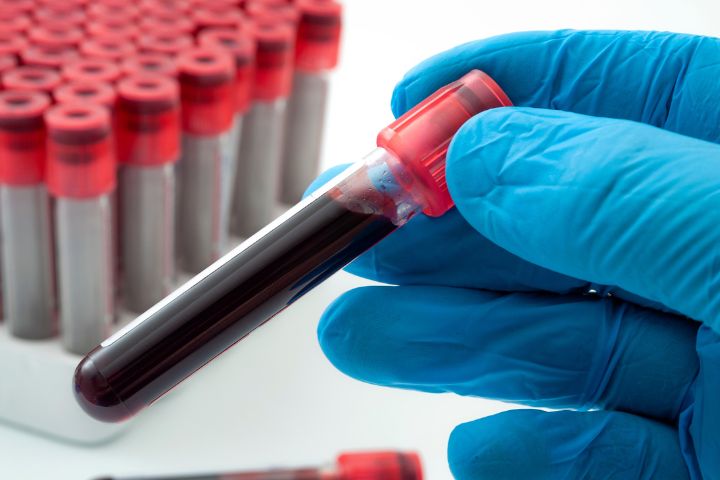Getting My Northeast Medical Institute - New Haven Campus Phlebotomy Course & Cna Class To Work
Wiki Article
10 Easy Facts About Northeast Medical Institute - New Haven Campus Phlebotomy Course & Cna Class Explained
Table of ContentsNot known Factual Statements About Northeast Medical Institute - New Haven Campus Phlebotomy Course & Cna Class Unknown Facts About Northeast Medical Institute - New Haven Campus Phlebotomy Course & Cna ClassNot known Facts About Northeast Medical Institute - New Haven Campus Phlebotomy Course & Cna ClassThe Best Strategy To Use For Northeast Medical Institute - New Haven Campus Phlebotomy Course & Cna ClassNot known Facts About Northeast Medical Institute - New Haven Campus Phlebotomy Course & Cna ClassSome Known Incorrect Statements About Northeast Medical Institute - New Haven Campus Phlebotomy Course & Cna Class
Nonetheless, making use of such devices ought to be come with by other infection avoidance and control methods, and training in their use. Not all safety and security gadgets are suitable to phlebotomy. Before selecting a safety-engineered tool, individuals ought to thoroughly explore offered devices to establish their proper use, compatibility with existing phlebotomy techniques, and efficiency in securing staff and individuals (12, 33).For settings with reduced resources, price is a driving factor in procurement of safety-engineered tools - PCT Courses. Where safety-engineered tools are not readily available, knowledgeable use a needle and syringe is appropriate. Unintentional direct exposure and particular details concerning an occurrence should be taped in a register. Assistance services must be promoted for those who undertake accidental exposure.
Among the necessary pens of quality of care in phlebotomy is the involvement and collaboration of the individual; this is equally valuable to both the wellness employee and the person. Clear details either created or spoken need to be readily available per person who undergoes phlebotomy. Annex F offers sample text for explaining the blood-sampling procedure to a person. In the blood-sampling area for an outpatient department or clinic, give a comfy reclining couch with an arm remainder.
The Buzz on Northeast Medical Institute - New Haven Campus Phlebotomy Course & Cna Class
Ensure that the indicators for blood tasting are clearly specified, either in a composed procedure or in recorded instructions (e.g. in a lab kind). Whatsoever times, adhere to the strategies for infection avoidance and control detailed in Table 2.2. Infection prevention and control techniques. Collect all the tools needed for the procedure and location it within secure and easy reach on a tray or trolley, making certain that all the items are clearly noticeable.Present yourself to the client, and ask the client to specify their complete name. Examine that the lab kind matches the person's identification (i.e. match the client's information with the laboratory type, to make sure exact recognition).
Make the person comfy in a supine setting (if feasible). Location a clean paper or towel under the patient's arm. Discuss the examination to be performed (see Annex F) and obtain spoken consent. The patient has a right to reject an examination at any kind of time prior to the blood sampling, so it is very important to make sure that the individual has understood the treatment.
Northeast Medical Institute - New Haven Campus Phlebotomy Course & Cna Class for Dummies
Prolong the individual's arm and evaluate the antecubital fossa or lower arm. Find a capillary of an excellent size that is visible, straight and clear. The layout in Area 2.3, reveals typical settings of the vessels, however many variations are possible. The typical cubital blood vessel lies in between muscles and is generally the most simple to penetrate.DO NOT put the needle where blood vessels are drawing away, due to the fact that this enhances the possibility of a haematoma. The capillary must be noticeable without using the tourniquet. Situating the blood vessel will assist in identifying the correct size of needle. Apply the tourniquet about 45 finger widths above the venepuncture site and re-examine the capillary.
Samplings from main lines carry a threat of contamination or incorrect laboratory test outcomes. It is appropriate, yet not optimal, to attract blood samplings when very first presenting an in-dwelling venous gadget, prior to connecting the cannula to the intravenous liquids.
Some Of Northeast Medical Institute - New Haven Campus Phlebotomy Course & Cna Class
Failing to permit adequate call time raises the danger of contamination. DO NOT touch the cleansed site; in specific, DO NOT place a finger over the capillary to direct the shaft of the subjected needle.Ask the individual to develop a clenched fist so the capillaries are extra noticeable. Get in the blood vessel promptly at a 30 level angle or less, and proceed to present the needle along the blood vessel at the simplest angle of entrance - PCT Classes. As soon as adequate blood has been collected, launch the tourniquet BEFORE withdrawing the needle
The Northeast Medical Institute - New Haven Campus Phlebotomy Course & Cna Class Diaries
Withdraw the needle carefully and apply gentle stress to the site with a clean gauze or completely dry cotton-wool ball. Ask the patient to hold the gauze or cotton woollen in position, with the arm expanded and increased. Ask the person NOT to bend the arm, due important site to the fact that doing so triggers a haematoma.
Our Northeast Medical Institute - New Haven Campus Phlebotomy Course & Cna Class Diaries
Where possible, keep the tubes in a rack and relocate the shelf in the direction of you - https://www.cheaperseeker.com/u/northeastmed. If the sample tube does not have a rubber stopper, infuse very gradually right into the tube as decreasing the pressure and rate utilized to transfer the sampling minimizes the danger of haemolysis.
Report this wiki page